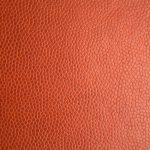When you think about historical fashion, damask likely stands out as a fabric that not only defines style but also power. Originating from Damascus, its intricate patterns and rich textures have graced the wardrobes of the elite across eras, particularly during the Renaissance and Victorian periods. This fabric didn't just serve aesthetic purposes; it was a statement of wealth and identity. But what really made damask a staple in these societies, and how did its significance evolve over time? Exploring these layers reveals much more than mere fabric.
Table of Contents
Origins of Damask Fabric
Damask fabric originated in the ancient city of Damascus, where artisans wove intricate patterns into luxurious textiles. You might be surprised to learn that the name 'damask' actually derives from the city itself. These skilled craftsmen used silk, linen, and cotton to create stunning designs that often featured floral or geometric motifs. The unique weaving technique produced a reversible pattern, allowing the fabric to display its beauty on both sides.
As you explore the history of damask, it's essential to recognize its significance in trade. The fabric quickly gained popularity across the Mediterranean and beyond, becoming a sought-after material for clothing, table linens, and upholstery. By the Middle Ages, damask had established itself as a symbol of luxury, often reserved for nobility and the wealthy elite.
You may also find it interesting that damask's complex weaving process required a high level of craftsmanship and artistry. This dedication to quality and design ensured that each piece wasn't only functional but also a work of art. Today, damask continues to be celebrated for its elegance and versatility, with modern interpretations paying homage to its rich heritage.
Damask in Renaissance Fashion
In Renaissance fashion, damask textiles showcased intricate patterns that conveyed wealth and status.
You'll notice how these designs weren't just decorative; they also carried deep symbolism, reflecting the values and aspirations of the time.
Exploring these elements reveals the essential role damask played in the wardrobe of the elite.
Textiles and Patterns
Renaissance fashion often showcased intricate damask textiles, elevating garments with their rich patterns and luxurious textures. As you explore the era's clothing, you'll notice how damask impacted not just the aesthetics but also the identity of the wearer. The interplay of light and shadow in damask patterns created a dynamic visual experience, making each piece unique.
When you think about damask in Renaissance fashion, consider these key aspects:
- Versatility: Damask was used for various garments, from dresses to nobility's capes.
- Technique: The weaving process involved intricate patterns that required skilled artisans.
- Color: Rich hues like deep reds and golds emphasized wealth and status.
- Durability: High-quality damask textiles stood the test of time, often passed down through generations.
Incorporating damask into clothing wasn't just about fashion; it also highlighted personal and societal narratives. Each pattern told a story, connecting the wearer to the broader tapestry of Renaissance culture.
Symbolism in Clothing
Clothing often served as a powerful symbol of status and identity, with damask patterns conveying messages about wealth and social standing during the Renaissance. When you see an intricate damask design, you're often looking at a piece of fabric that communicates prestige. The rich textures and complex patterns weren't just beautiful; they indicated the wearer's affluence and taste.
In this era, you'd notice that nobles and affluent merchants favored damask for their garments, as it was often woven with silk and adorned with elaborate motifs. The colors used in damask also played a crucial role. Deep reds, golds, and blues were highly prized, signaling power and influence. If you wore damask, you were making a statement about your social hierarchy.
Additionally, specific motifs within damask could represent various virtues or allegiances, revealing personal beliefs or family heritage. As you explore Renaissance fashion, you'll find that each piece tells a unique story through its fabric and style. Ultimately, damask wasn't just a textile; it was a language of its own, speaking volumes about those who wore it.
Victorian Era and Damask
During the Victorian Era, damask fabric became a popular choice for both elegant attire and lavish home decor, reflecting the era's emphasis on opulence and intricate design.
You'd find damask gracing everything from evening gowns to sumptuous draperies, adding a touch of luxury to everyday life. This textile's intricate patterns and rich textures made it a favorite among the upper classes, who sought to showcase their wealth and taste.
When you look deeper into the Victorian use of damask, you can appreciate several key aspects:
- Symbol of Status: Wearing damask was often a way to signal social standing.
- Complex Patterns: The designs often featured floral or geometric motifs, showcasing craftsmanship.
- Versatile Use: It was used in clothing, upholstery, and table linens, highlighting its adaptability.
- Color Varieties: Rich colors like deep reds and golds were prevalent, embodying the era's lavishness.
Cultural Significance of Damask
Beyond its aesthetic appeal in Victorian fashion, damask carries deep cultural significance, symbolizing artistry and craftsmanship across various societies.
When you delve into the history of damask, you'll find that it's not just a fabric; it's a narrative woven into the traditions of different cultures. Originating from the Middle East, damask was highly prized in ancient trade, reflecting a society's wealth and status.
You might notice that in many cultures, damask is associated with special occasions and rituals. It often adorns ceremonial garments and household items, representing prosperity and celebration. For instance, in Chinese culture, damask has been used in weddings and festivals, embodying joy and good fortune.
Moreover, you can see how damask promotes a sense of identity and heritage. In regions where it flourished, artisans took pride in their craft, passing down techniques through generations. This connection to heritage not only enhances the fabric's value but also fosters community and continuity.
Technological Advances in Textile Production
As you explore the evolution of damask, you'll notice how innovations in weaving techniques transformed textile production.
The Industrial Revolution played a crucial role in scaling these methods, making fabrics more accessible than ever before.
Today, digital textile printing continues to push the boundaries, offering endless possibilities for design and customization.
Innovations in Weaving Techniques
Innovations in weaving techniques have drastically transformed textile production, allowing for more intricate designs and efficient manufacturing processes.
You'll find that modern weaving technology hasn't only enhanced the quality of textiles but has also made them more accessible. With advancements like computer-aided design (CAD) and automated looms, you can create complex patterns that were once time-consuming and labor-intensive.
Here are some key innovations reshaping the industry:
- Jacquard Looms: These allow for the automatic production of intricate patterns, revolutionizing design capabilities.
- Digital Weaving: This technology enables precise control over design elements and reduces production waste.
- 3D Weaving: This technique produces three-dimensional structures, expanding the functional uses of textiles.
- Smart Fabrics: Integrating technology into textiles can create fabrics that respond to environmental stimuli.
Impact of Industrial Revolution
The Industrial Revolution fundamentally reshaped textile production, introducing groundbreaking technologies that streamlined manufacturing and expanded design possibilities.
You'll notice how innovations like the spinning jenny and power loom drastically increased fabric output. These machines allowed for faster production, reducing costs and making textiles more accessible to a broader audience.
With the advent of mechanized weaving, patterns became more intricate and consistent. You could find beautifully designed damask fabrics being produced at an unprecedented scale, catering to both high-end markets and everyday consumers. The introduction of synthetic dyes also revolutionized the industry, providing vibrant colors that were previously hard to achieve.
As you explore the impact of these technological advances, it's clear that the Industrial Revolution not only enhanced efficiency but also fostered creativity. Designers had access to a wider range of materials and techniques, leading to a flourishing of styles.
The rise of textile mills changed the landscape of fashion and home decor, making luxurious fabrics like damask more popular than ever. This era marked a significant shift in how textiles were produced and consumed, laying the groundwork for the modern textile industry we know today.
Digital Textile Printing Advances
Digital textile printing has transformed the way designers create and produce intricate damask patterns, allowing for greater customization and shorter production times. With this innovative technology, you can now bring your unique visions to life without the constraints of traditional printing methods. The ability to print directly onto fabric means you can experiment with colors, textures, and designs like never before.
Here are some key benefits of digital textile printing:
- Customization: You can create one-of-a-kind designs tailored to specific client needs, ensuring a personal touch.
- Speed: Reduced production times mean you can respond quickly to market trends and customer demands.
- Sustainability: Digital printing typically uses less water and energy, making it a more environmentally friendly option.
- Reduced Waste: The precision of digital printing minimizes fabric waste, cutting down on excess material.
As you embrace these advances, you'll find that digital textile printing opens up a world of possibilities for your damask designs, blending tradition with modern innovation.
Modern Interpretations of Damask
Exploring modern interpretations of damask reveals a vibrant fusion of traditional elegance with contemporary design elements.
You'll find that today's designers are reimagining damask patterns, incorporating bold colors and innovative materials that challenge conventional aesthetics. This evolution allows you to experience damask in ways you mightn't have expected.
For instance, you can see damask used in everything from upholstery to wallpaper, where its intricate designs enhance modern interiors.
Textiles featuring damask patterns often blend soft textures with striking geometric shapes, creating a fresh take that feels both timeless and current.
You might even encounter damask in fashion, where designers are using it to add a touch of sophistication to casual wear, making it accessible for everyday use.
Frequently Asked Questions
What Types of Fibers Are Commonly Used in Damask Fabric?
When you explore damask fabric, you'll find it commonly made from silk, linen, cotton, or polyester. Each fiber offers unique qualities, allowing you to choose based on texture, durability, and the desired aesthetic.
How Is Damask Fabric Different From Brocade and Satin?
Damask fabric features intricate patterns woven into the fabric, while brocade has raised designs and satin boasts a smooth, glossy finish. You'll notice these differences in texture and appearance when comparing them side by side.
Can Damask Be Used for Upholstery or Home Decor?
Yes, you can absolutely use damask for upholstery or home decor. Its elegant patterns and durability make it a fantastic choice for curtains, cushions, and furniture, adding a touch of sophistication to any space.
What Maintenance Is Required for Damask Garments?
To maintain damask garments, you should regularly check for stains and clean them promptly. Washing on a gentle cycle or dry cleaning's often best. Avoid direct sunlight to prevent fading and keep them looking fresh.
Are There Specific Regions Known for Producing High-Quality Damask?
Yes, you're right! Regions like Italy, Syria, and China are renowned for producing high-quality damask. Their craftsmanship, unique techniques, and rich traditions contribute to the exceptional quality that damask fabrics are celebrated for today.
- A Look at Bicomponent Fibers in Nonwoven Technology - July 12, 2025
- The Importance of Nonwovens in Modern Hygiene Products - July 12, 2025
- Understanding the Absorbency of Different Nonwoven Fabrics - July 12, 2025







